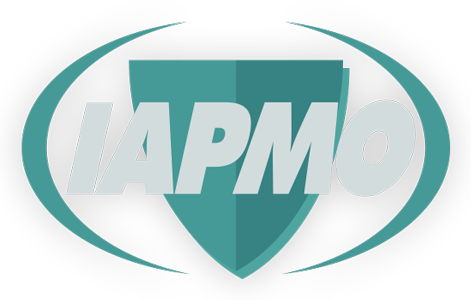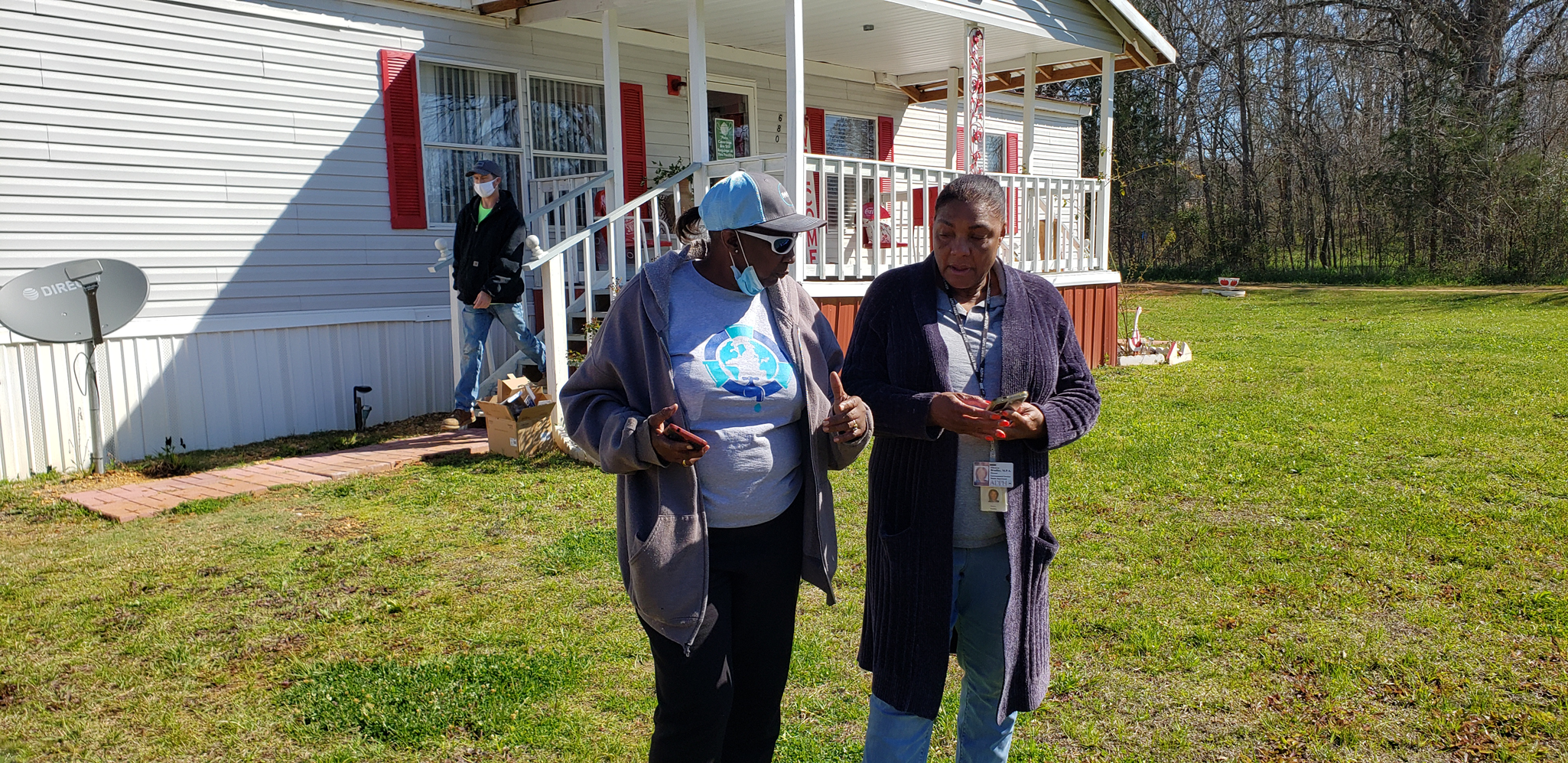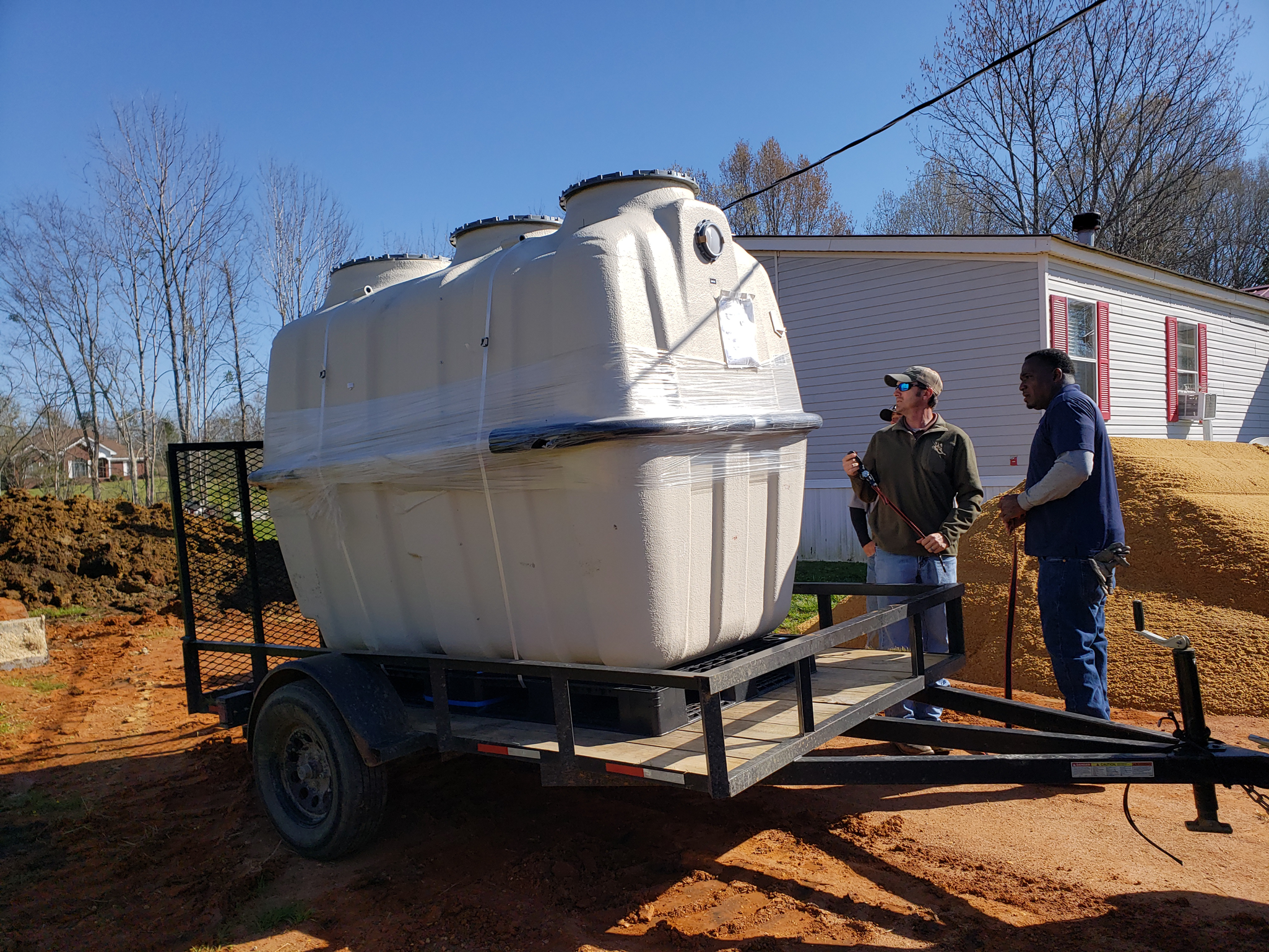“I will never forget several times I left home with that sewage acting up. And when I came back, sewage was everywhere.”
Perman Hardy lived with sewage backing up in her Lowndes County Alabama home for more than 30 years. The hard, clay-like Black Prairie soil where Hardy lives does not allow for the permeability of water from traditional septic tanks.
With low population density, high poverty levels, the rural nature of the homes making public sewer systems unfeasible–and, previously, no local building codes requiring that homes have safe wastewater solutions–residents used “straight piping” systems that released sewage above the ground. When it rained, the sewage would back up in to yards and inside homes.
“I had small children, so we couldn’t even stay in the house until I got it cleaned up.” Eventually, her homeowner’s insurance stopped covering repair costs.
It is shocking to most people when they learn that 2.2 million Americans live without clean drinking water and safe sanitation. While the circumstances of Hardy’s region of Alabama have been widely reported, it is just one of the areas where individuals live with inadequate or nonexistent plumbing systems. The areas with the largest water and sanitation gaps are in parts of Hawaii, Alaska, Appalachia, the California Central Valley, and the Navajo Nation, as well as Alabama, but the problem exists in every state. Many people in America live without flush toilets.. But even among those that do have flush toilets, people live with inadequate wastewater treatment systems including straight piping, cesspools, and broken septic tanks.
Hardy found relief through the introduction of a next-generation septic system installed in June 2021. Thanks to the Blackbelt Unincorporated Wastewater Program (BBUWP) founded by Alabama Department of Public Health official Sherry Bradley and supported by plumbing manufacturers LIXIL and Fuji Clean USA, as well as plumbing volunteers through the IWSH Foundation, decentralized solutions are finally coming to this 17-county “black belt” region in Alabama.
Perman Hardy and Sherry Bradley on-site for the second decentralized wastewater treatment installation near Haynesville, Alabama
News last month that the U.S. Environmental Protection Agency (EPA) and U.S. Department of Agriculture (USDA) announced the Closing America’s Wastewater Access Gap Community Initiative will accelerate this relief. The EPA and USDA will jointly leverage technical assistance resources to help historically underserved communities identify and pursue federal funding opportunities – including from President Biden’s Bipartisan Infrastructure Law – to address their wastewater needs and eliminate harmful exposure to backyard sewage. The program will be piloted in 11 communities across the country where residents lack basic wastewater management.
Decentralized wastewater systems and other “off-the-grid” innovations can provide a long-term and cost-effective solution for communities that are underserved by adequate water and waste systems. The EPA notes that broader adoption of these systems can help communities avoid significant capital costs, reduce operation and maintenance costs, and promote business and job opportunities.
The human benefits are apparent, but investing in clean water and safe sanitation provides direct societal benefits to every American, as recently quantified by the non-profit DigDeep.
For every $1 invested in improving our hygiene infrastructure, the US economy sees $4.65 in societal return. That’s $1.65 in direct benefits, such as lowered healthcare costs and more time to work or study, and $3 in implicit benefits by reducing premature loss of life.
The opportunity is now to build this infrastructure, leveraging funds from the 2021 Infrastructure Investment and Jobs Act which includes $50 billion for water-related projects. The EPA notes this is “the single largest investment in water that the federal government has ever made.”
A Fuji Clean USA tank ready to be installed at a Lowndes County Alabama residence
To put it simply: bureaucracy cannot get in the way of helping families living in circumstances like Perman Hardy. We must make sure the investment gets to the most vulnerable communities through data-driven, measurable, public investment-funded solutions that are transparent and accountable.
“I am thankful. I am very thankful. I want to see every family, homeowner, be able to reap the benefit of what I’m seeing for myself,” Hardy said, now working with Bradley through the BBUWP to secure decentralized solutions for 170 families in the Alabama Black Belt region. Meanwhile, Bradley’s efforts were recognized this week at the annual conference of the International Association of Plumbing and Mechanical Officials (IAPMO) as a recipient of the 2022 IWSH Award.
With all that money coming down the pipeline–and the clock ticking to make these big changes happen before the end of 2026 — it’s going to be a challenge to try to leverage all this money to be most effective and reach people in need. If your community wants to learn more about Technical Assistance opportunities, visit https://www.epa.gov/water-infrastructure/water-technical-assistance.



